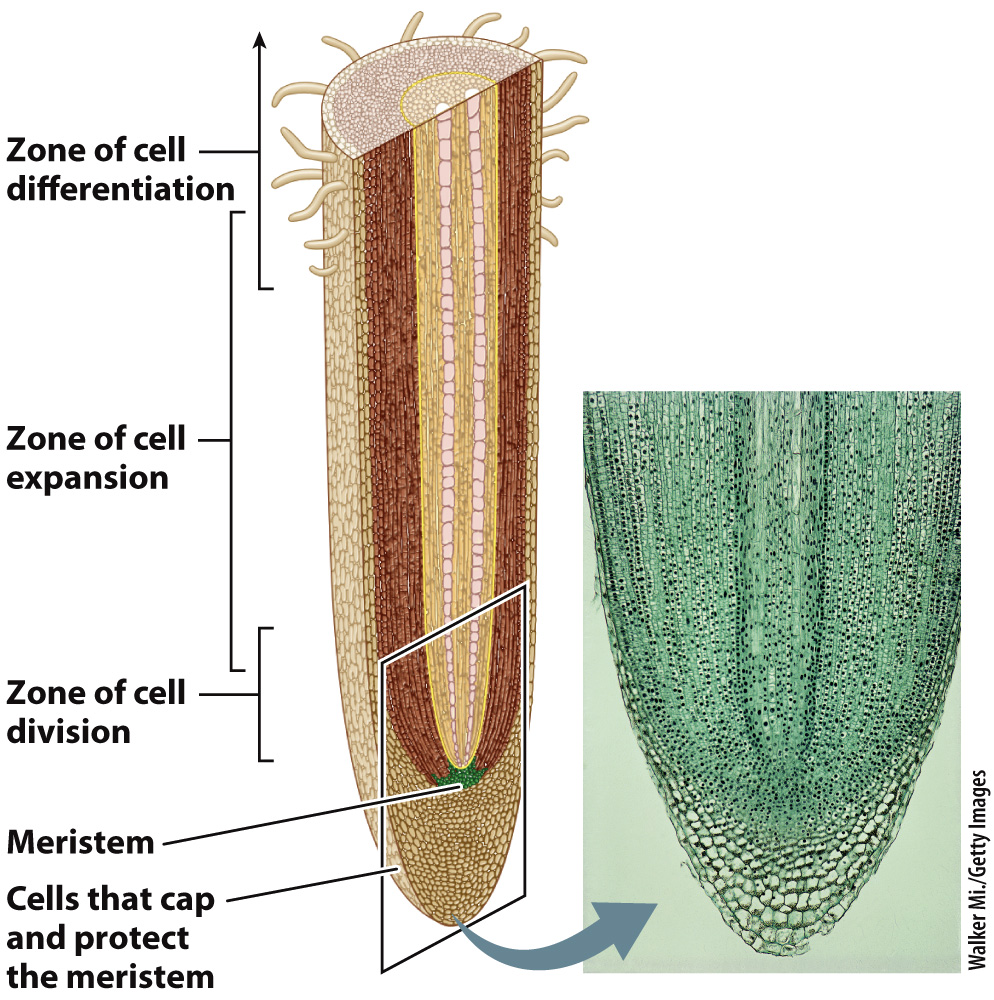Cell walls shape patterns of growth and development in plants.
The plant cell wall (Chapter 5), made of cellulose, provides structural support to cells. In fact, the cell wall provides the mechanical support that allows plants to stand erect (Chapter 29). The presence of cell walls has largely determined the evolutionary fate of plants. For example, because their cells cannot engulf particles or absorb organic molecules, most plants gain carbon and energy only through photosynthesis. In addition, because all plant cells except eggs and sperm are completely surrounded by cell walls, they have no pseudopodia and no flagella (in conifers and flowering plants, even sperm have lost their flagella). This being the case, plant cells cannot move. Therefore, the plant as a whole is constrained to obtain nutrients, evade predators, and cope with environmental stress without moving parts.
The inability of plant cells to move has major consequences for development. At the level of the cell, the entire program of growth and development involves cell division, cell expansion (commonly by developing large vacuoles in cell interiors), and cell differentiation. The mechanical consequence is that plant growth is confined to meristems (Fig. 28.10), populations of actively dividing cells at the tips of stems and roots (Chapter 31). The cells in meristem regions are more or less permanently undifferentiated cells that repeatedly undergo mitosis. A few millimeters from the region of active cell division in a stem or root meristem, cells stop dividing and begin to expand. Within another few millimeters, this activity is curtailed as well. There, individual cells respond to signaling molecules that induce differentiation, forming the mature cells that will function in photosynthesis, storage, bulk flow, or mechanical support. In general, then, plant development involves site-

Because cell walls render plants immobile, plants have evolved mechanisms to transport water and nutrients from the soil to leaves that may be tens of meters distant without the use of any moving parts or even the expenditure of ATP. And because plants are anchored in place, they are unable to move in response to unfavorable growth conditions. Instead, plants respond to environmental signals by adjusting their meristem activity and, hence, growth pattern. Heat, drought, floods, and fire can all leave their mark in altered patterns of growth—
The details of plant growth, development, reproduction, and function are presented in Chapters 29–